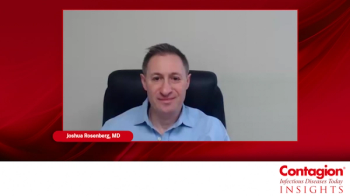
Creating Greater PrEP Access with Large Public Health Goals and Local Service Models
Macro and micro strategies are at play in aiming to create greater PrEP access and adoption.
The advent of
According to the US Centers for Disease Control and Prevention, as many as 1.1 million Americans could benefit from PrEP, including 175,000 women and 780,000 people of color.
Yet, statistics on usage remains low compared to the prospective benefactors.
According to
Internationally, both the United Nations (UN) and the World Health Organization (WHO) have identified PrEP adoption as significant, but utilization rates for PrEP are also below targets and expectations.
Back in 2015, the WHO recommended offering once-daily oral PrEP to people at substantial risk of HIV acquisition, and in the following year, the United Nations General Assembly set a global target of 3 million oral pre-exposure prophylaxis (PrEP) users by 2020. 1
Although the UN 2020 global PrEP target was going to be missed, 180 countries reportedly adopted the WHO PrEP recommendations into national guidelines. And in 2019, there were about 626,000 PrEP users across 77 countries. 1
Although this seems to be a macro upward trend, much of what works has to do on a very local level between a provider and individuals to uncover the socioeconomic and structural issues that prevent PrEP initiation.
Kimberly Green, PhD, global program director, Primary Health Care,
As part of her presentation, Green discussed how lowering the threshold to start PrEP could make more people eligible for the therapy. For example, creatinine has been found to increase in some people who take PrEP, so this could remain a barrier to initiation. “In the WHO guidelines that were announced at the conference [IAS 2021], they have made creatinine measurement a whole lot simpler saying it is optional for individuals under the age of 30 who are otherwise healthy,” Green stated. “Steps and actions like that can really make it a lot easier to access PrEP.”
In another potential service model for PrEP, Green discussed the “de-medicalizing” of PrEP, where lay providers—who are not physicians—are able to have discussions with people and play a part in PrEP delivery. She does, however, make the point to say that PrEP utilization can help users get into the health care funnel and connect to primary care services.
Contagion spoke to Green about her presentation and she offered some insights into strategies for greater access, the limitations COVID-19 placed on PrEP adherence, and other valuable takeaways regarding PrEP access.
References
1. Schafer et al. Adoption of guidelines on and use of oral pre-exposure prophylaxis: a global summary and forecasting study; Lancet HIV 202; Published Online; July 12, 2021 https://doi.org/10.1016/ S2352-3018(21)00127-2
Newsletter
Stay ahead of emerging infectious disease threats with expert insights and breaking research. Subscribe now to get updates delivered straight to your inbox.



















































































































































































































































































